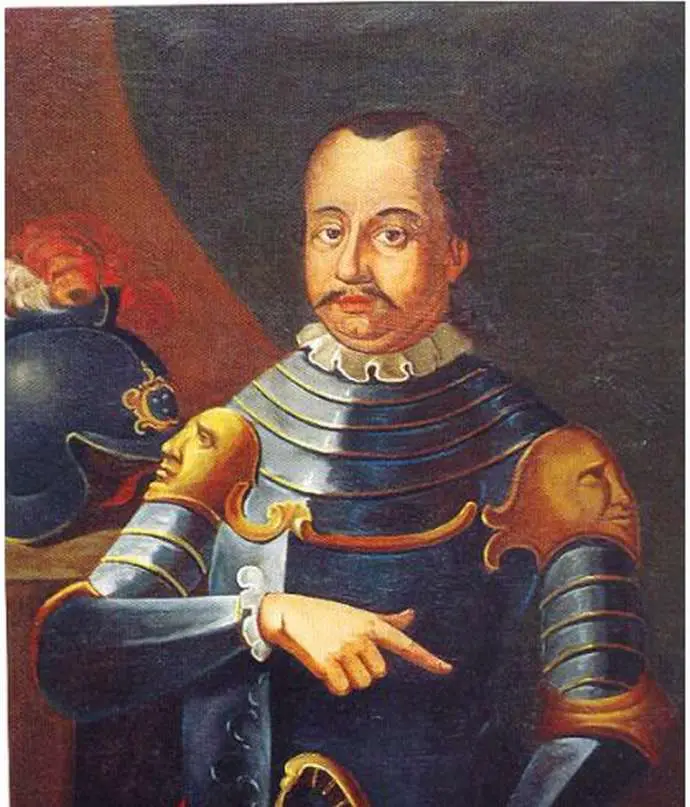In 1456 Ulrik II, the last male member of the Counts of Celje was murdered in Belgrade, which meant the end of the House of Celje and the Habsburgs inheriting their lands.
The Counts of Celje were one of the most successful feudal families that emerged in the present-day Slovenia, and seriously challenged the early dominance of the Habsburgs. The Counts were elevated to the rank of Princes in 1436, mostly thanks to a successful series of military campaigns and the marriage policies of Hermann II, the grandfather of Ulrik II.
Hermann II managed to establish a relationship of trust with King and later Emperor Sigismund of Luxemburg, expand his family’s territories from Styria deep into the Balkans and set the stage for his grandchild Ulrik II to attempt to take the Hungarian throne.
In 1388 Hermann II arranged the marriage of his first born son Frederick III with Elisabeth of the Frankopans, both babies at the time. Hermann’s goal was to establish a principality – a political entity subservient directly and only to the King. The marriage with the Frankopans, a Croat noble family, would help ease resistance in Slavonia that started to build up against the House of Celje due to its expansion into the Balkans. He also managed to secure a generous dowry that Elisabeth brought into the family, which included several estates in Kvarner on the Adriatic coast.
While the engaged were growing up, each with their own families, Hermann II made a smart move by joining King Sigismund of Luxemburg in his 1396 Crusade of Nicopolis, which was to save Constantinople and Byzantine Empire from the Ottoman Turks. During the campaign he saved Sigismund’s life and the King promised him to marry his daughter Barbara in return. Through this marriage, Barbara, once old enough, became the Empress of the Holy Roman Empire after Sigismund was elected Emperor in 1433.
The plans Hermann II had for his oldest son, Frederick II, however, didn’t go as he envisioned. When Elisabeth and Frederick were finally married in 1404 or 1405, they did not get along very well. Elisabeth gave birth to two boys, Ulrik II and Frederick III, the latter dying in early childhood. The couple lived separately from 1415 until Elisabeth’s suspicious death in 1422. How and where Elisabeth died is not very clear. According to one of the stories, especially popular among Frankopans who wanted Elisabeth’s dowry back, Frederick II strangled her so that he could get married with his mistress, Veronika of Desenice.
In 1424 or 1425 Veronica of Desenice and Frederick II of Celje got married, and Frederick built the Friedrichstein Castle above Kočevje, where they would presumably live happily ever after.
With this marriage he fell out of favour not only with the Frankopans, who took back control of the territories that had been included in Elisabeth’s dowry, but also his father Hermann II, whose political achievements he wasted, and the Hungarian court under King Sigismund, who felt obligated to his father.
In 1425 Frederick II applied for asylum in Venice, claiming that his father and the Hungarian court were attempting to kill him and his wife, but the senate of the city state turned him down. Somehow King Sigismund managed to lure Frederick to his court where he was captured and handed over to his father, who threw him in jail and demolished Friedrichstein Castle.
Veronica was hiding in monasteries and forests until she was captured as well. In order to clear his son’s name in front of other noble families, Hermann headed to court accusing Veronica of witchcraft. He failed, the court found her not guilty. Hermann II then jailed Veronica in Ojstrica castle where she was drowned in a tub by Hermann’s guard on October 14, 1425.
Frederick, however, didn’t stay in prison for very long. In 1426 his only remaining brother Hermann III died. The only heirs of the Counts of Celje now were Frederick II and his son Ulrik II, so Hermann II released his son from jail.
Hermann II, however, was still reluctant to entrust Frederick with the management of the family estates. In 1429 Frederick II was given the title Count of Zagorje by King Sigismund of Hungary, something Hermann probably opposed. In 1435 Frederick II rebelled against his father by demanding concessions from the Hungarian King, now also the Holy Roman Emperor, placing Sigismund in the middle of the dispute he had with his father. These troubles stopped with Hermann’s death. On November 30, 1436, Frederick II and Ulrik II were elevated to the ranks of Princes, which came with the power granted to them over jurisdiction, currency production and mining.
The Princes of Celje now became legal contesters for the Empire’s crown, which endangered the unity of the Habsburg estates. Between the years of 1436 and 1443 a war ensued between the two families. Although the House of Celje proved stronger on the battlefield, they had to accept a ceasefire as by then Frederick III of the Habsburgs was already crowned a King. In 1443 a mutual inheritance contract was signed by the two families in case of dynastic extinction.
Meanwhile, Emperor Sigismund died in 1437, which triggered the succession crisis for the Hungarian crown. Ulrik II entered the intrigues that followed, and Frederick II helped by engaging in diplomatic missions, mobilizing the family’s vast connections abroad. Frederick II died in 1454, and a year later second Ulrik’s son died as well, rendering Urlic II the sole surviving heir of the House of Celje.
In 1456 Ulrik II was assassinated by the rival House of Hunyadis from Transylvania, while accompanying Hungarian King Ladislav to Belgrade. This meant that the House of Celje was extinct and according to the mutual inheritance contract, the Habsburgs became legal heirs of their estates, setting the stage for the Austrian Empire.






